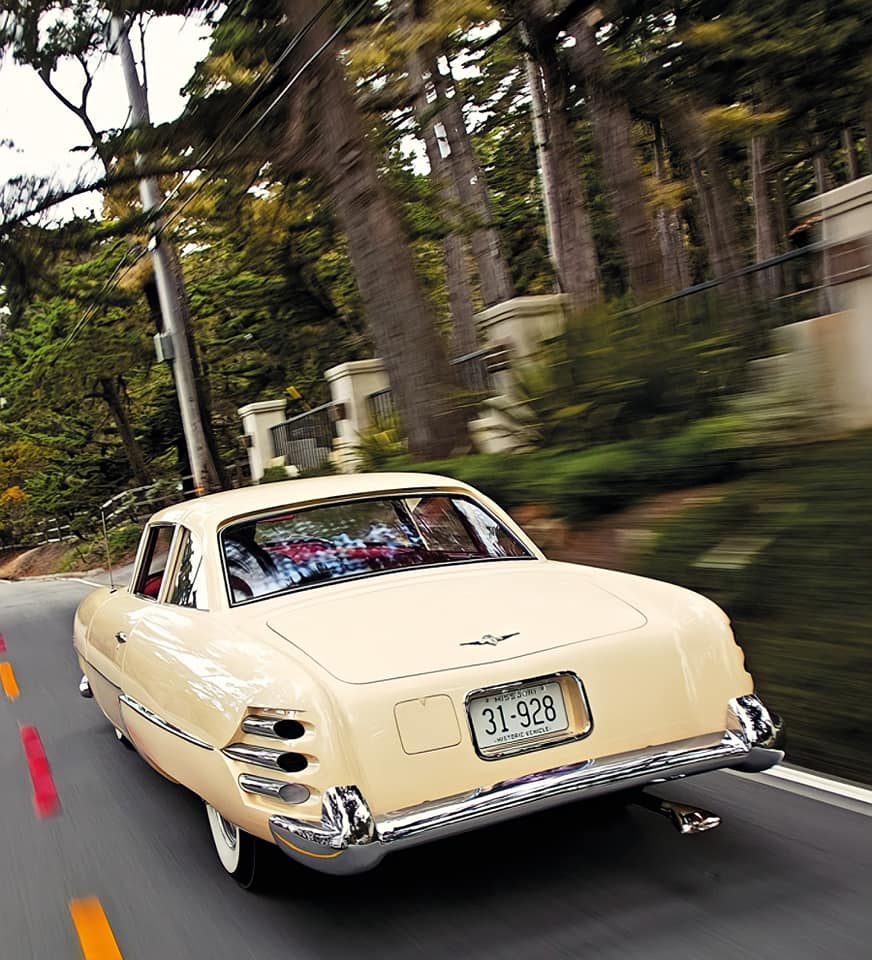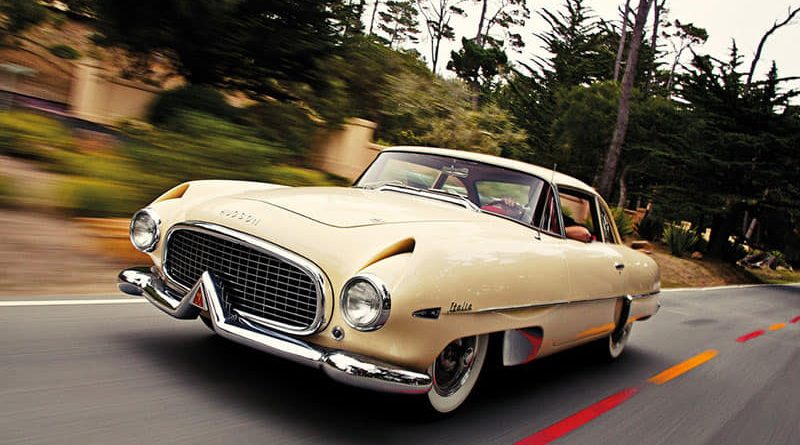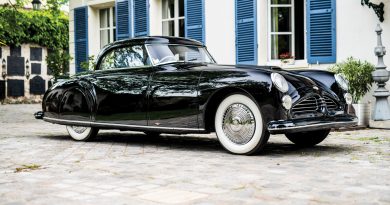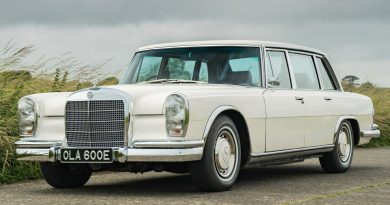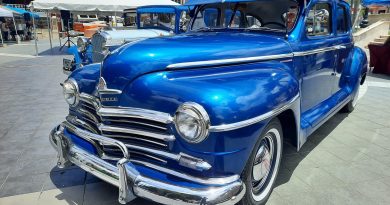1954 Hudson Italia Coupe
The Hudson Italia is an automobile styling study and a limited production two-door compact coupé that was produced by the Hudson Motor Car Company of Detroit, Michigan, in cooperation with Carrozzeria Touring of Italy, and subsequently marketed by American Motors Corporation during the 1954 and 1955 model years. Designed by Frank Spring with input from Carlo Felice Bianchi Anderloni of Carrozzeria Touring, and introduced 14 January 1954, the Italia was based on the Hudson Jet platform and running gear, but with a unique body and interior.
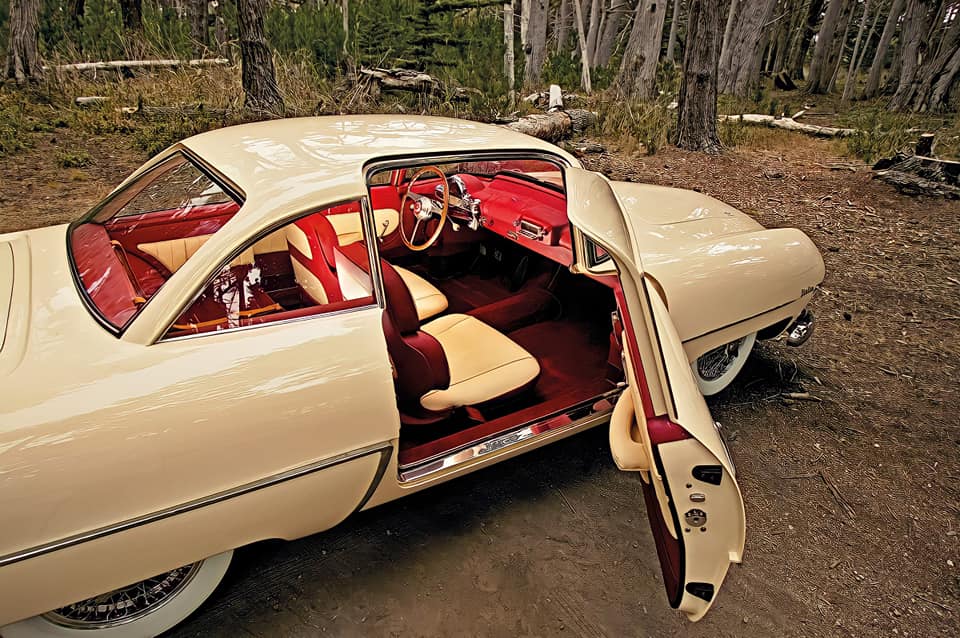
This car first appeared under the “Super Jet” name and featured numerous advancements including its aluminum body, wraparound windshield (reminiscent of the 1953 Corvette), doors that cut 14 inches (356 mm) into the roof (also called aircraft doors) for easier entry and exit. In part because of Hudson’s “step-down” floorpan, which dated to 1948, the Italia was 9 in (229 mm) lower than the Jet, but shared its 105 in (2,667 mm) wheelbase. The prototype also featured Borrani chrome wire wheels and its column mounted three-speed transmission included an overdrive unit.
Rear quarter scoops cooled the rear brakes. In the back of the car, the tail, directional, and back-up lamps tipped the ends of three stacked chrome tubes per side, emerging from scalloped cut-outs in the rear quarter panels.
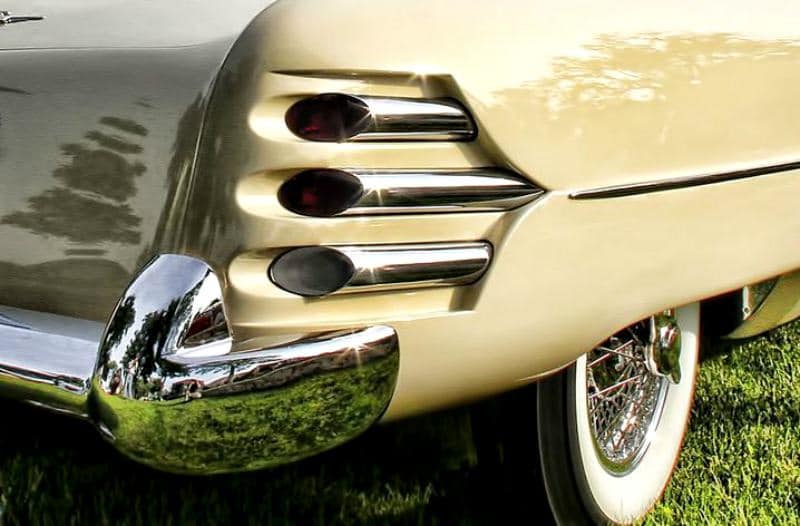
The Italia was powered by Hudson’s “Twin H” 202 cu in (3.3 L) L-head straight 6, with higher (8:1) compression and dual one-barrel (single choke) downdraft carburetors, producing 114 hp (85 kW; 116 PS) and all were equipped with a 3-speed manual transmission with a column-mounted gear shift lever. The cars featured drum brakes front and rear. The trunk was accessible only from inside the car as part of a large luggage platform behind the seats with straps to hold cargo and lockable storage compartments on either side of the platform.

Hudson’s interest in new designs for an independent future had been real. One 2-door Italia-inspired sedan was built on a Hornet chassis. Called “X-161” in company code, it survives. Taken by Spring as his personal car, since his death it has passed through a series of owners. Together with the surviving Italias, it points to the direction Hudson might have taken had the company remained as a real independent, monuments to Spring’s vision.

The Hudson Italia is far less common than the contemporary Kaiser Darrin or Nash-Healey, of which several hundred were produced. In many respects, these other two sports cars seem much more mainstream than Frank Spring’s creation, which is a remarkable concoction of fantasy and practicality and is guaranteed to draw a crowd wherever it appears.
